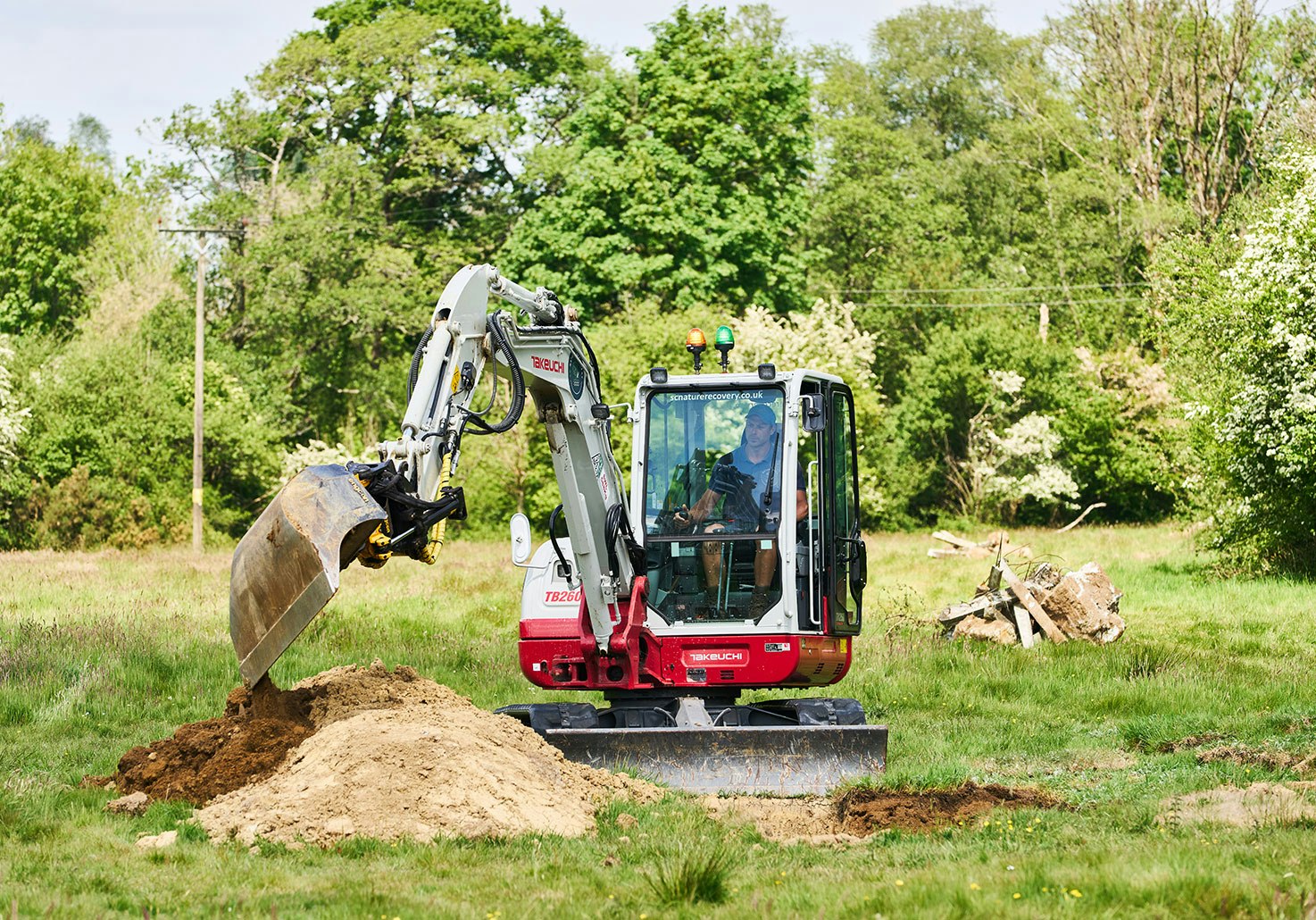Autumn Rewilding – Beavers, Scrapes and Raptors at Work
Autumn rewilding in action: Chris Packham and the team build beaver habitats, bird scrapes and raptor perches to boost British biodiversity.

The Land Management team, led by Chief Ecologist Chris Packham, has set their sights on Downicary in Devon, a 28‑acre expanse of former sheep pasture ripe for rapid nature restoration. Though it may look like any other swathe of “improved” grassland, beneath its verdant veneer lies an extraordinary opportunity: to demonstrate how bold, targeted interventions can fast‑track biodiversity recovery, transforming compacted turf into a thriving wet meadow.

From Industrial Turf to Wet Meadow
Historically, Downicary was intensively grazed, with sheep stocking rates and fertiliser input creating a tight, uniform sward dominated by rye‑grass and clover. Test pits reveal a clay subsoil that holds water, sealed beneath a biologically impoverished turf. By excavating a series of scrapes and shallow lagoon - some just 30 cm deep, others closer to 70 cm - our team will liberate that clay, forming seasonal wet basins that mimic the site’s historic wet meadow character.
These features, which will number around a dozen across the 50 acres, will flood in winter and spring, offering rich feeding grounds for waders such as lapwing and curlew, and habitat for amphibians and aquatic invertebrates. As summer arrives, isolated ponds will retain water longer, supporting dragonflies and marsh frogs. This sculpted hydrology accelerates processes that passive succession would take decades to establish.
Seeding Diverse Plant Communities
Bare, compacted soil and a paucity of worms mean scarce seedbank and low germination rates. To overcome this, the team's species‑recovery centre is growing target plants under polytunnels; devil’s‑bit scabious, greater tussock sedge, marsh marigold and other wet‑meadow specialists. After the scrapes are cut, we’ll spread green hay sourced from a nearby, flower‑rich meadow and introduce plug plants. This “green hay” technique inoculates the soil with local genotypes of wildflowers and sedges, ensuring a rapid floral response and supporting pollinators, small mammals and their predators.
Downicary already hosts a legally established beaver population in the River Cary. By thinning riverside willows and installing large woody debris, we’ll encourage beavers to extend their dam‑building into the newly created scrapes, further slowing water flow, raising the water table and generating backwaters. Beaver activity will compound our excavation efforts, creating sinuous channels and dynamic wetland mosaics that boost habitat heterogeneity and water‑retention capacity across the site.
Structuring the Landscape
Beyond hydrology, our restoration toolkit includes strategic tree and scrub management to create soft, tapered edges between wet meadow and woodland. Selective thinning of wet willow carr allows light to penetrate, fostering an understorey of damp‑ground specialists and creating nesting opportunities for marsh tit and willow tit. There will also be nest boxes tailored for these species installed, encouraging them to colonise early and serve as bellwethers for broader biodiversity gains.
No restoration succeeds in isolation. Adjacent landowners already maintain a yellow‑rattle‑rich meadow by the water’s edge; there will be seed mixes exchanged and coordinated planting days, weaving a network of pollinator corridors along the river. We hope local volunteers and schools will join our surveying teams each spring, recording botanical, bird and amphibian indicators. This community engagement ensures Downicary’s rewilding radiates benefits beyond the fence, inspiring neighbouring farms to embrace similar interventions.
Measuring Progress with Indicator Species
Rather than rely solely on total species counts, the team focus on indicator species whose presence signals wider ecosystem health. For example, early colonisation by marsh tit or willow tit reflects robust scrub structure; lapwing breeding attempts indicate suitable scrapes; emergence of greater tussock sedge signifies a maturing wet meadow. Seasonal surveys—bat‑detector transects, butterfly counts and aquatic invertebrate sampling—will track influence year by year.
A Blueprint for Urgent Action
In the face of Britain’s biodiversity crisis, Downicary exemplifies what can be achieved on a relatively small footprint when urgency meets expertise. By front‑loading heavy‑lift interventions in the summer months - digging scrapes, planting green hay, deploying beaver‑friendly woody material - we minimise repeat disturbance and let nature’s self‑organising processes take over. Within two to three years, the team expect to see a striking transformation: wildflower meadows punctuated by ponds, bustling with insect amphibian and bird life.
Why It Matters
Though Downicary represents just one small part of Devon’s countryside, its impact will ripple outward. Healthy wet meadows help buffer floods, filter pollutants, sequester carbon and sustain pollinator populations vital for surrounding farmland. By documenting methods, costs and outcomes, the Green Britain Foundation Team provide a replicable model for landowners nationwide, proof that, with the right interventions, we can fast‑track nature’s recovery and redress decades of intensive agriculture in a matter of seasons.
Under Chris Packham’s guidance, Ecotalk customers’ support will turn Downicary from an “industrial bowling‑alley” into a dynamic wetland haven. In the coming years, as plants sway along scrapes and lapwings perform their sky‑dances, we’ll witness the rewards of urgent, landscape‑scale rewilding, an inspiration for the future of nature restoration in the UK.